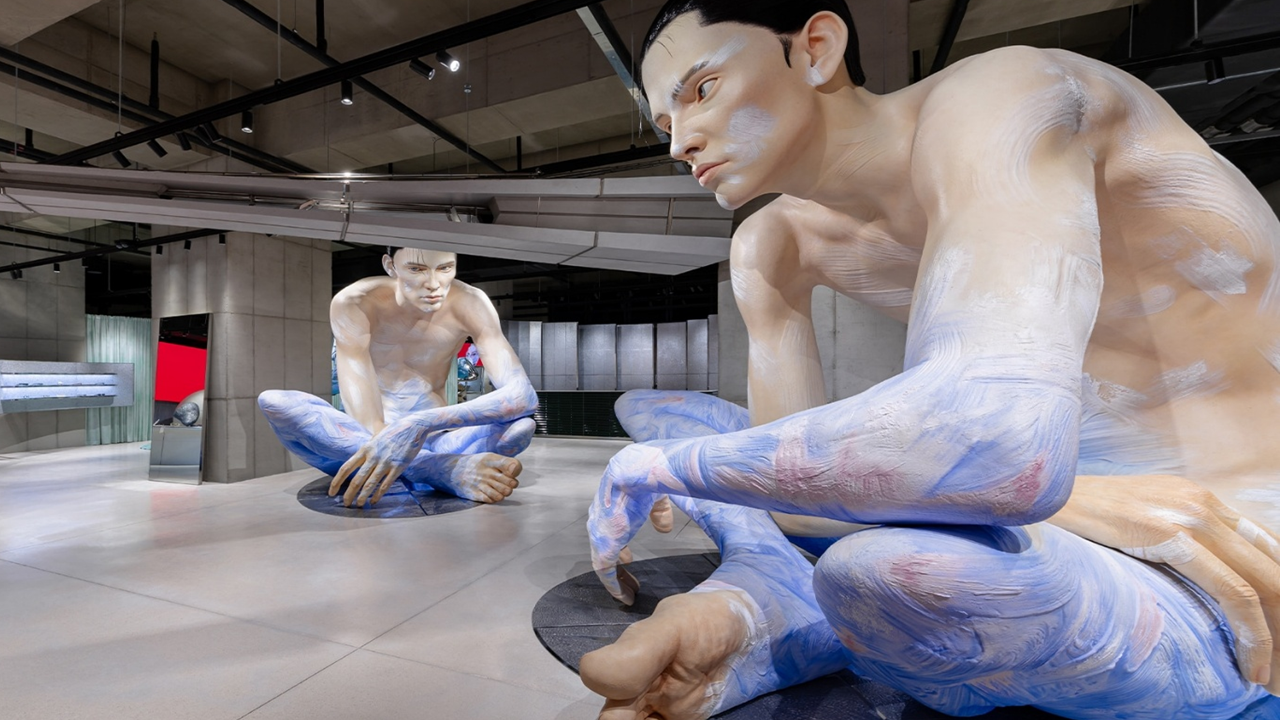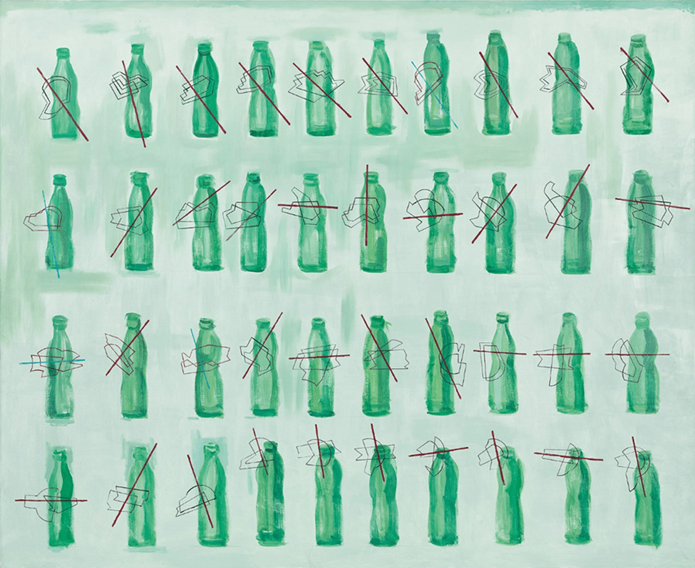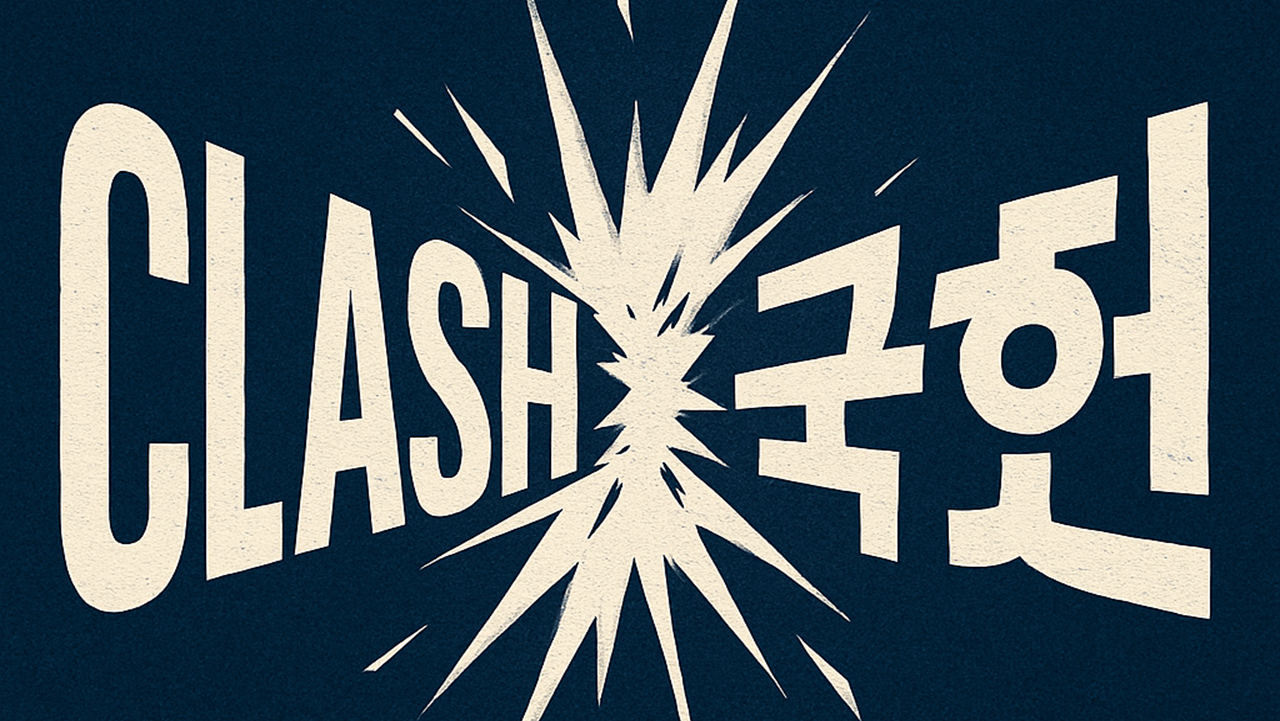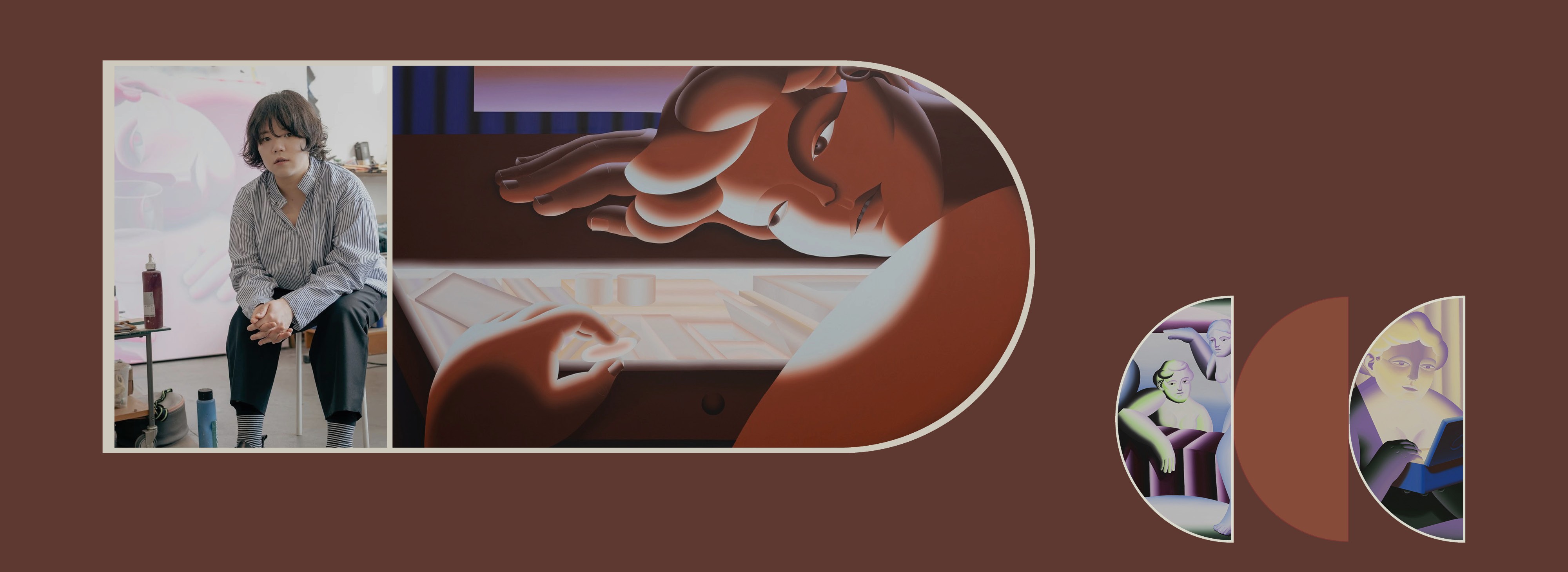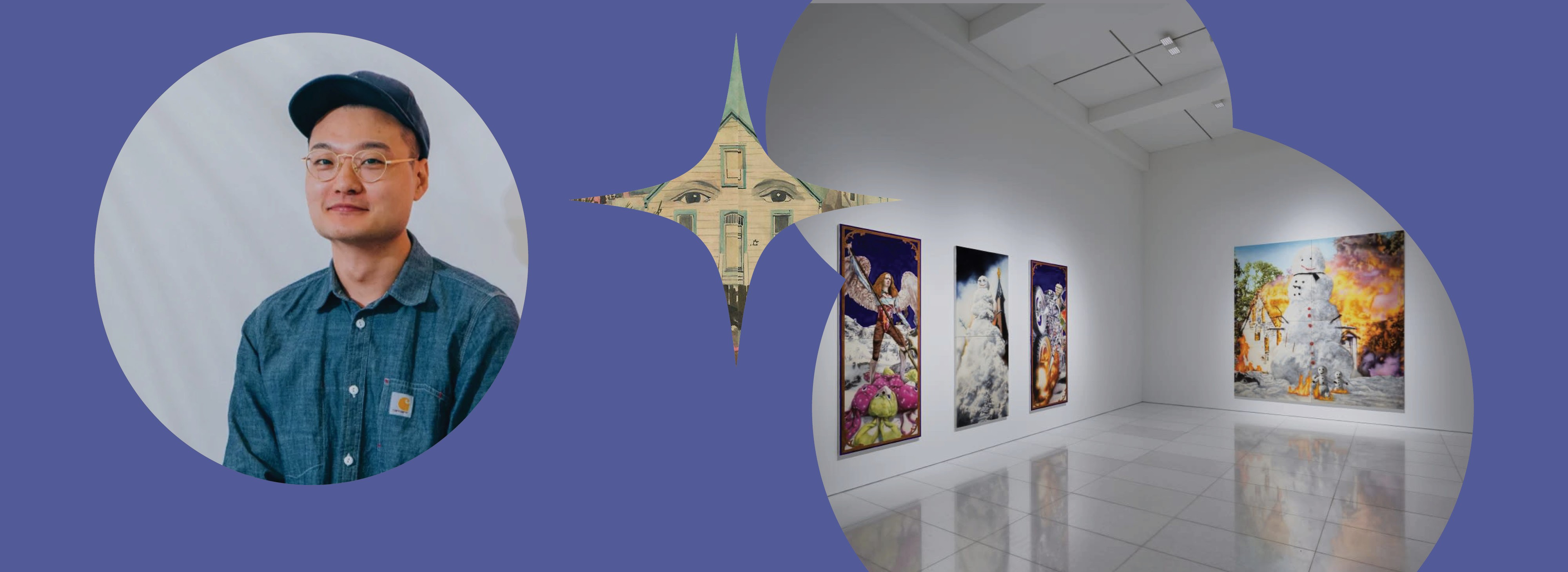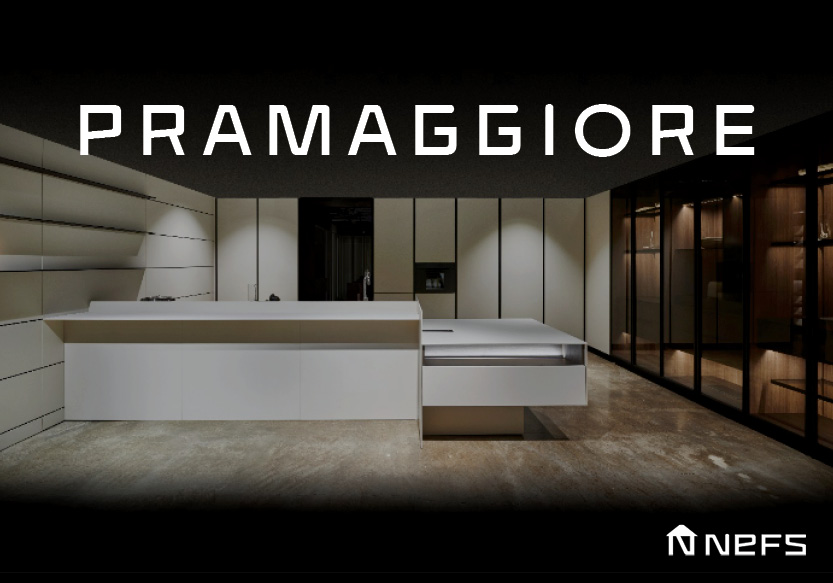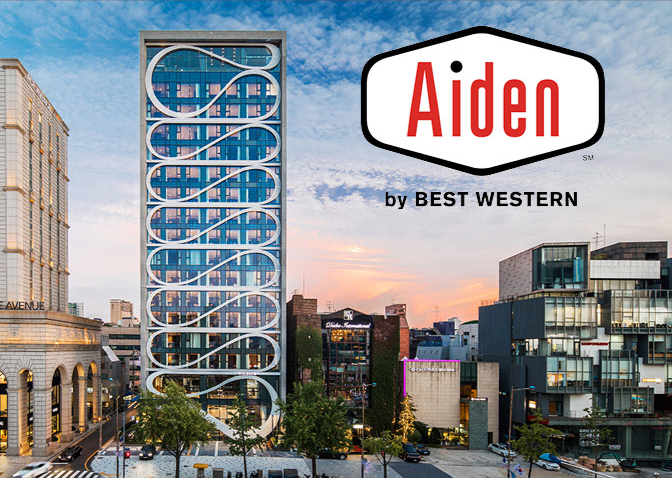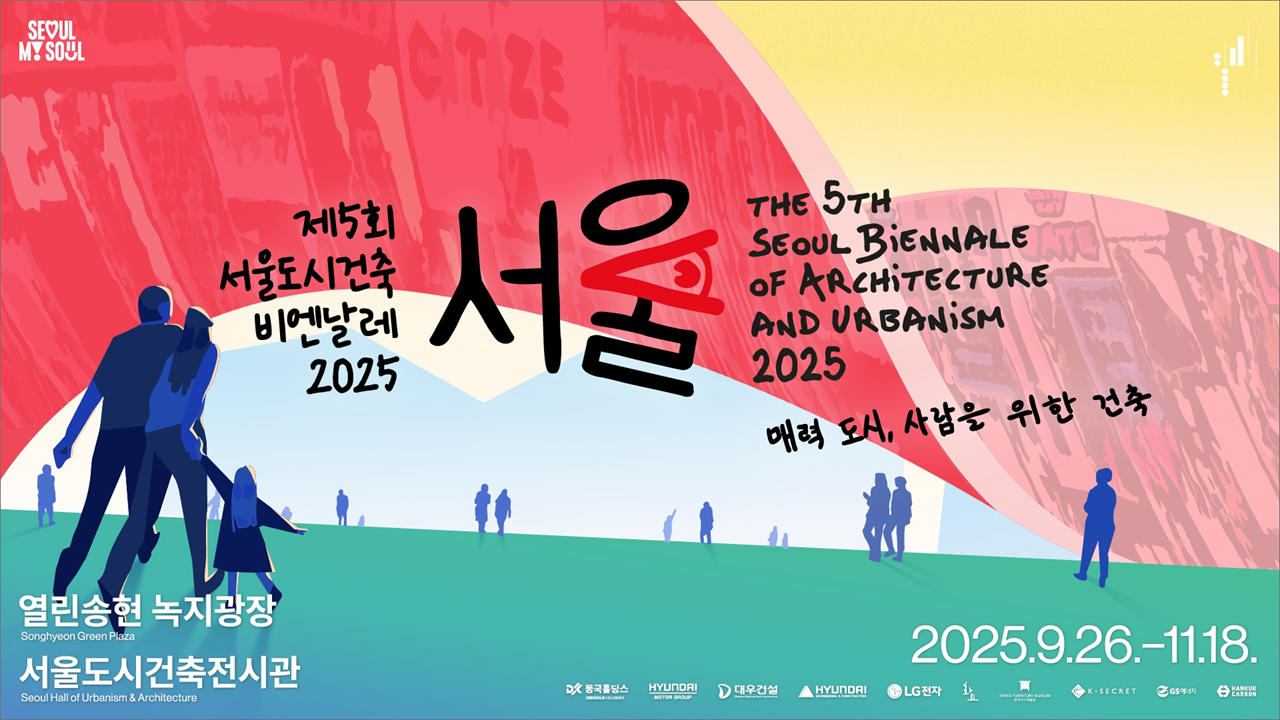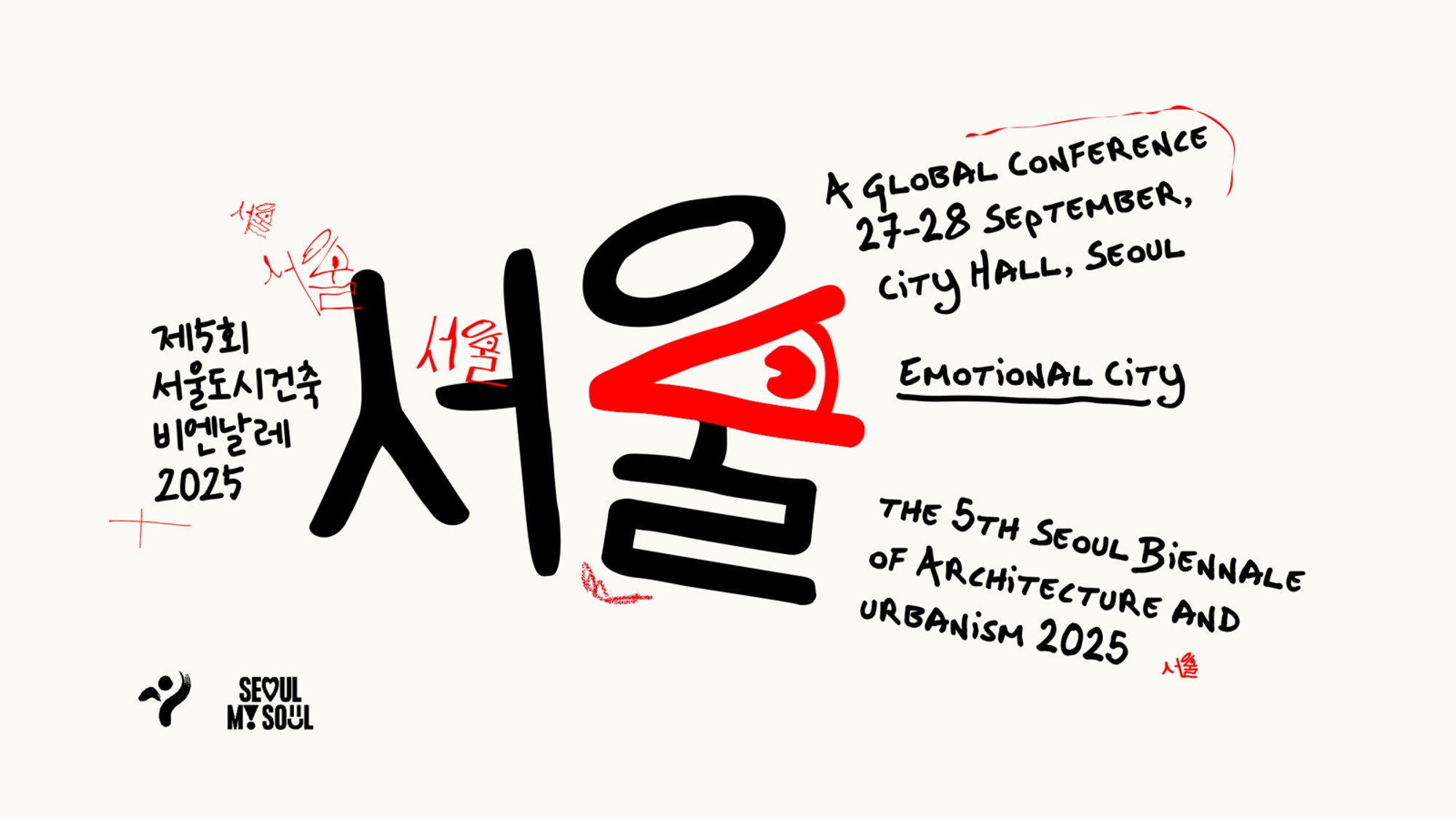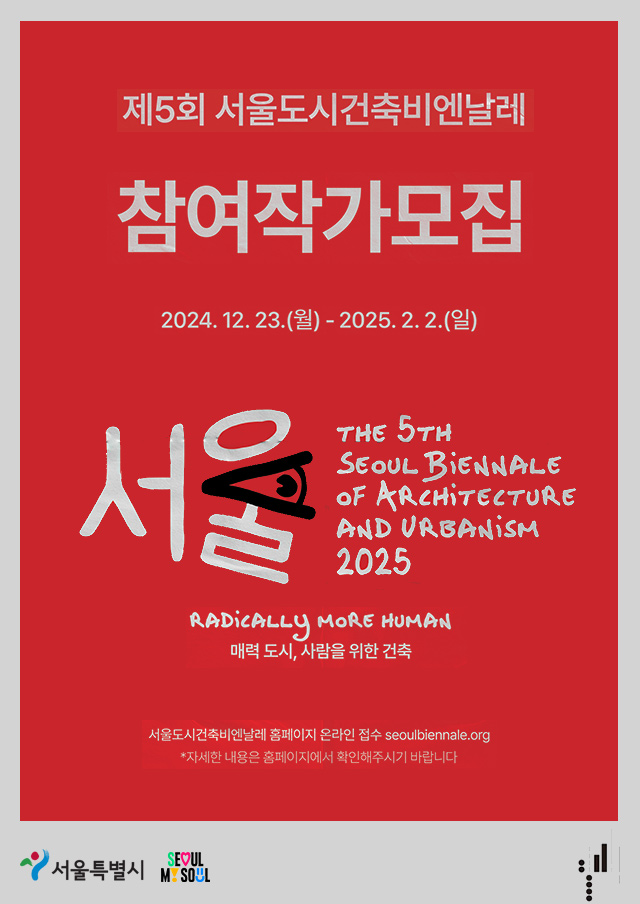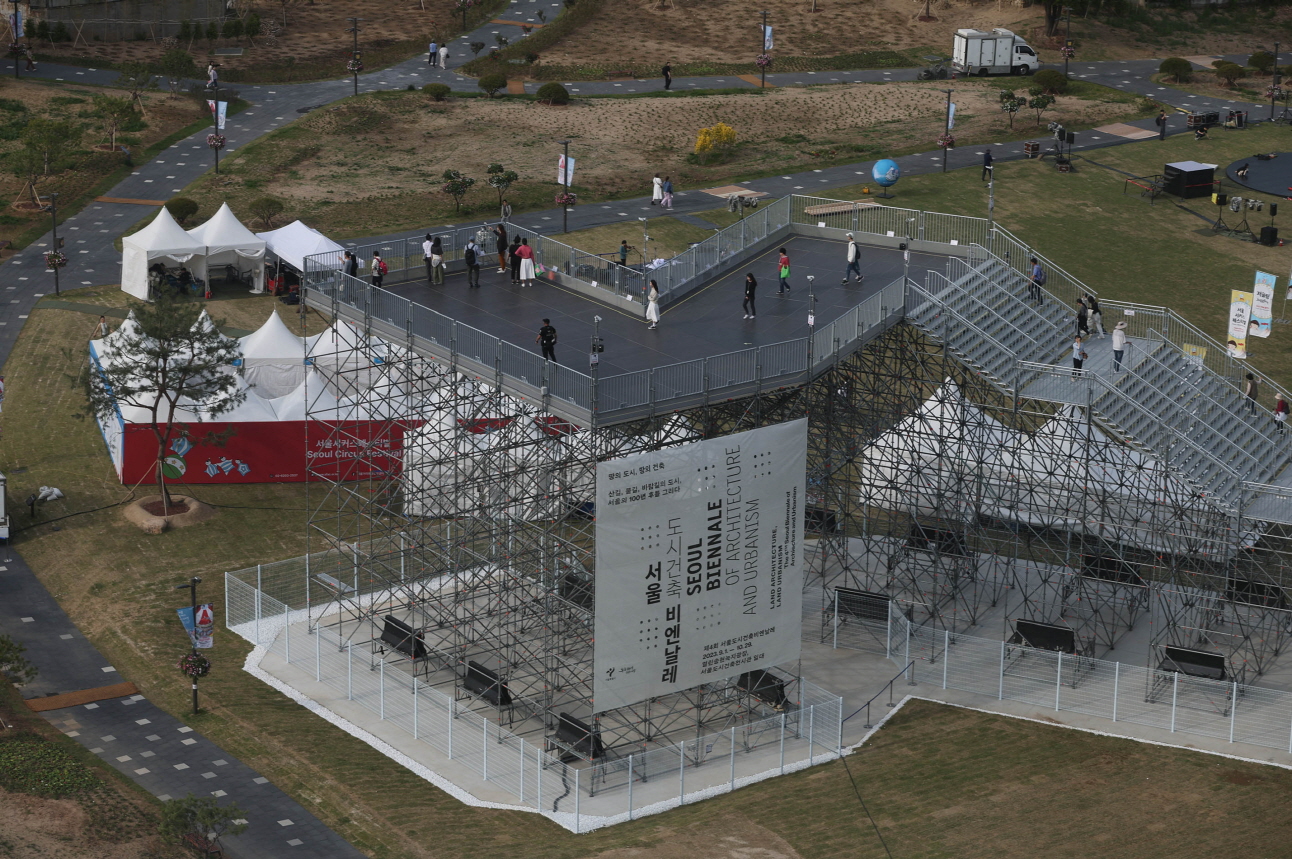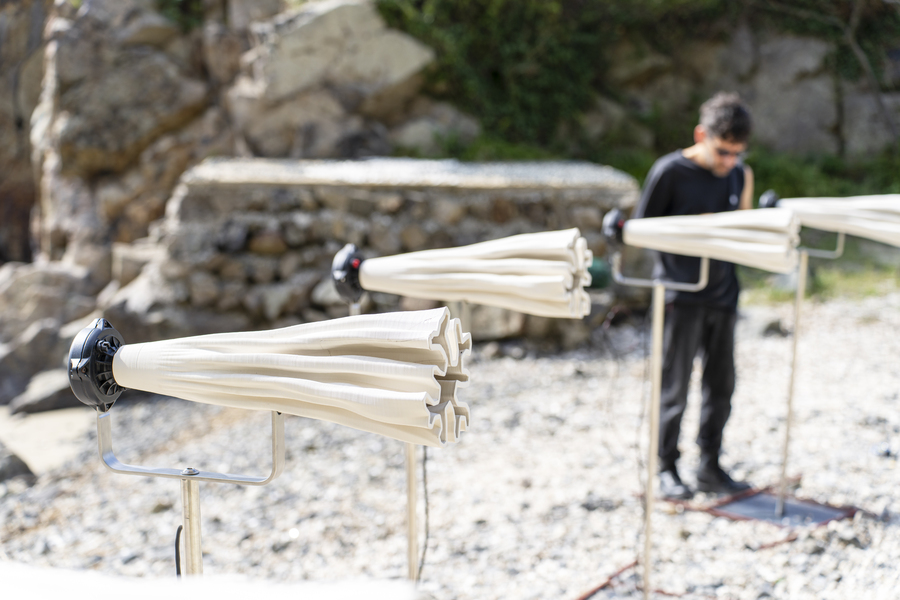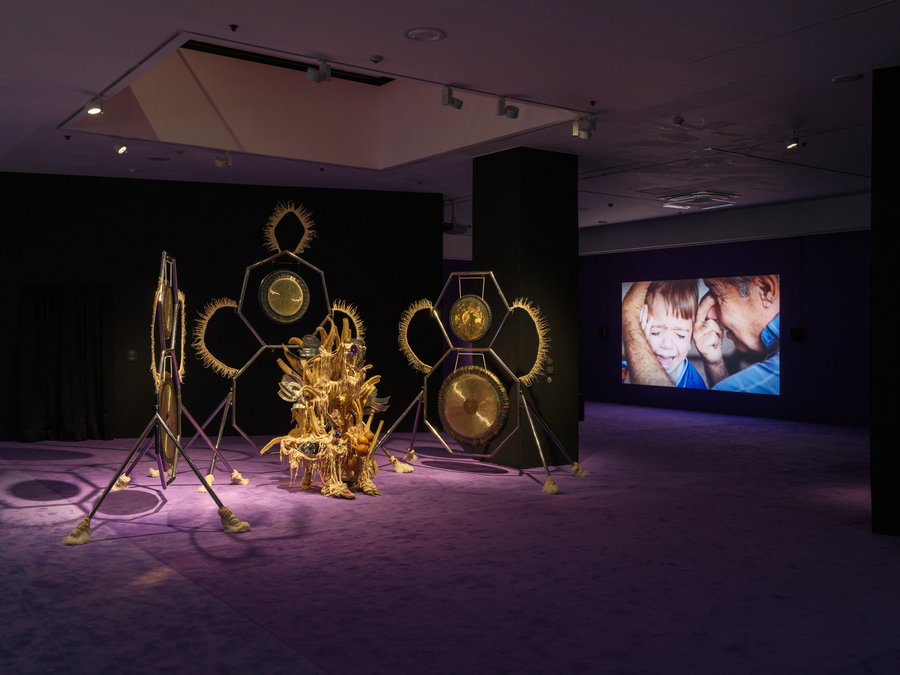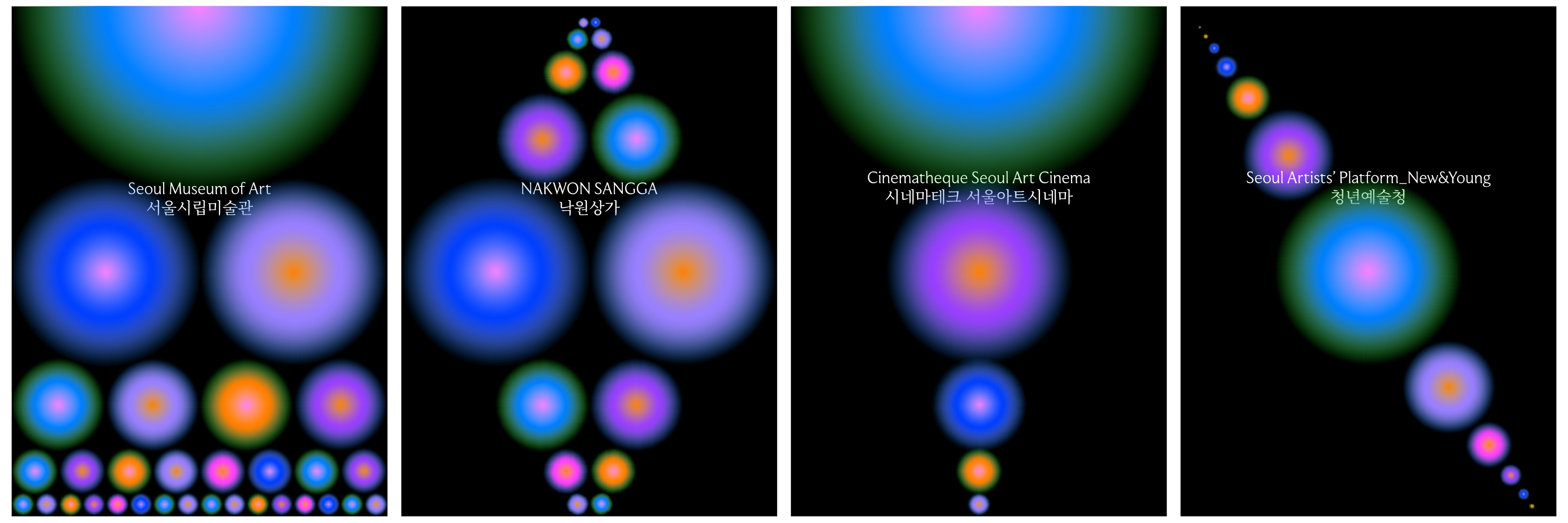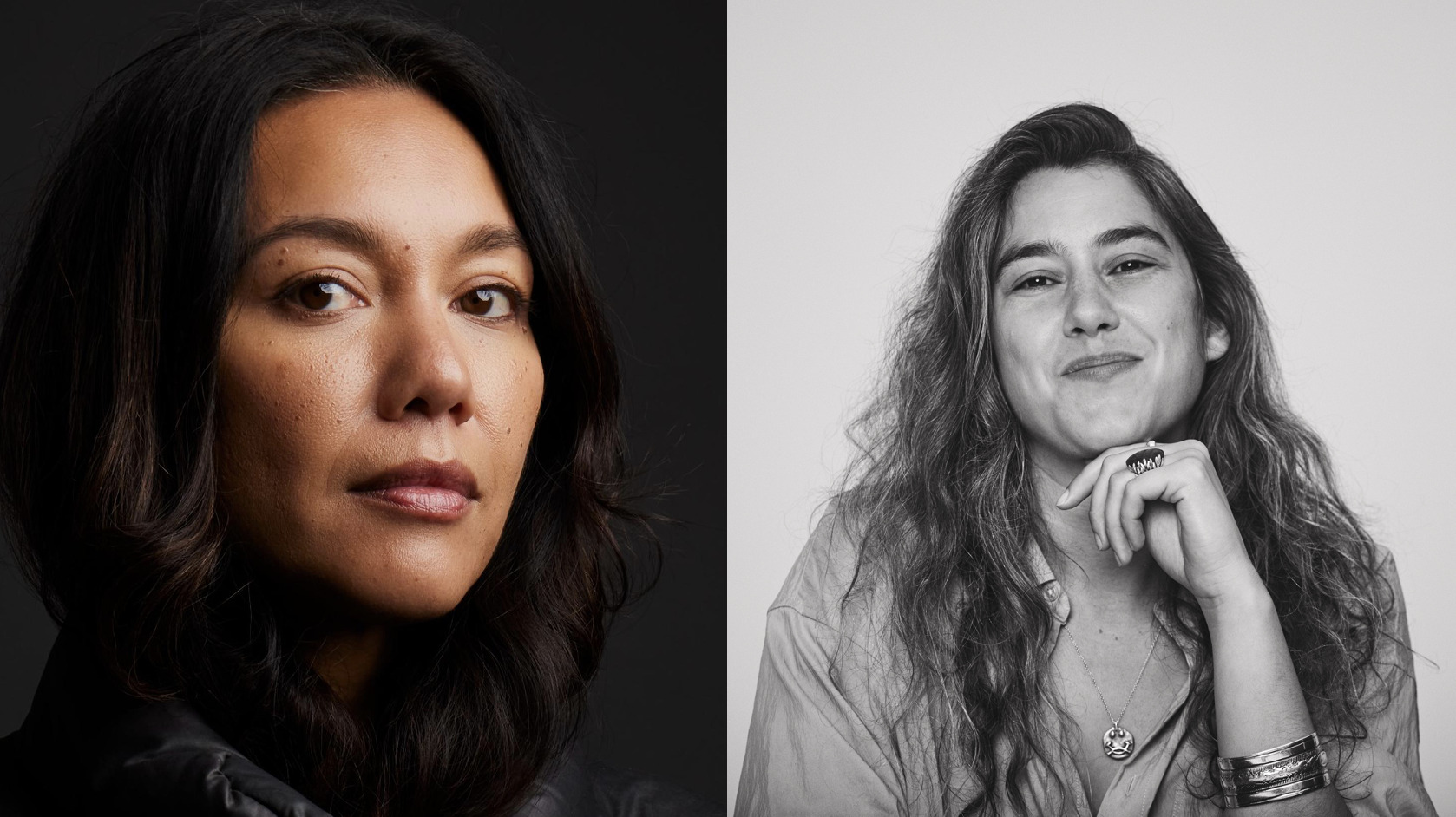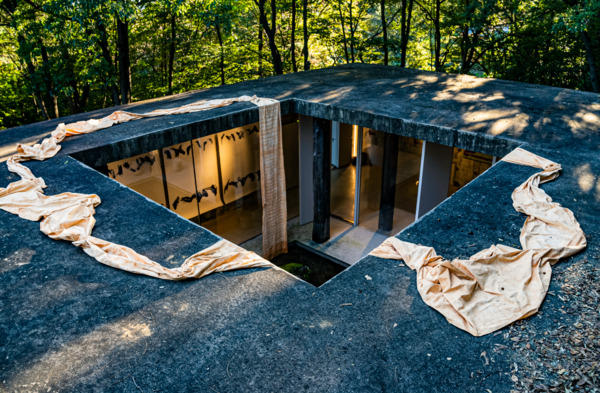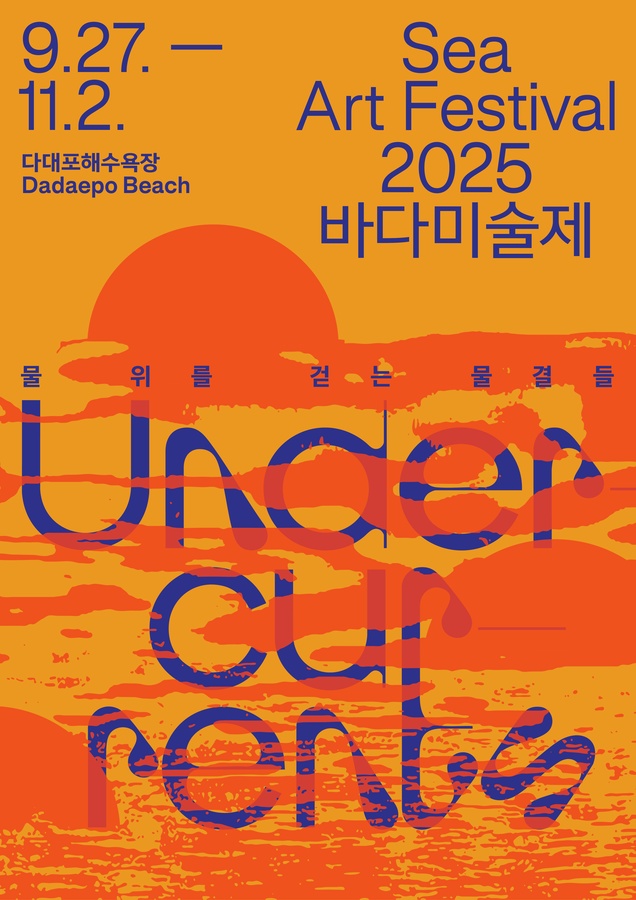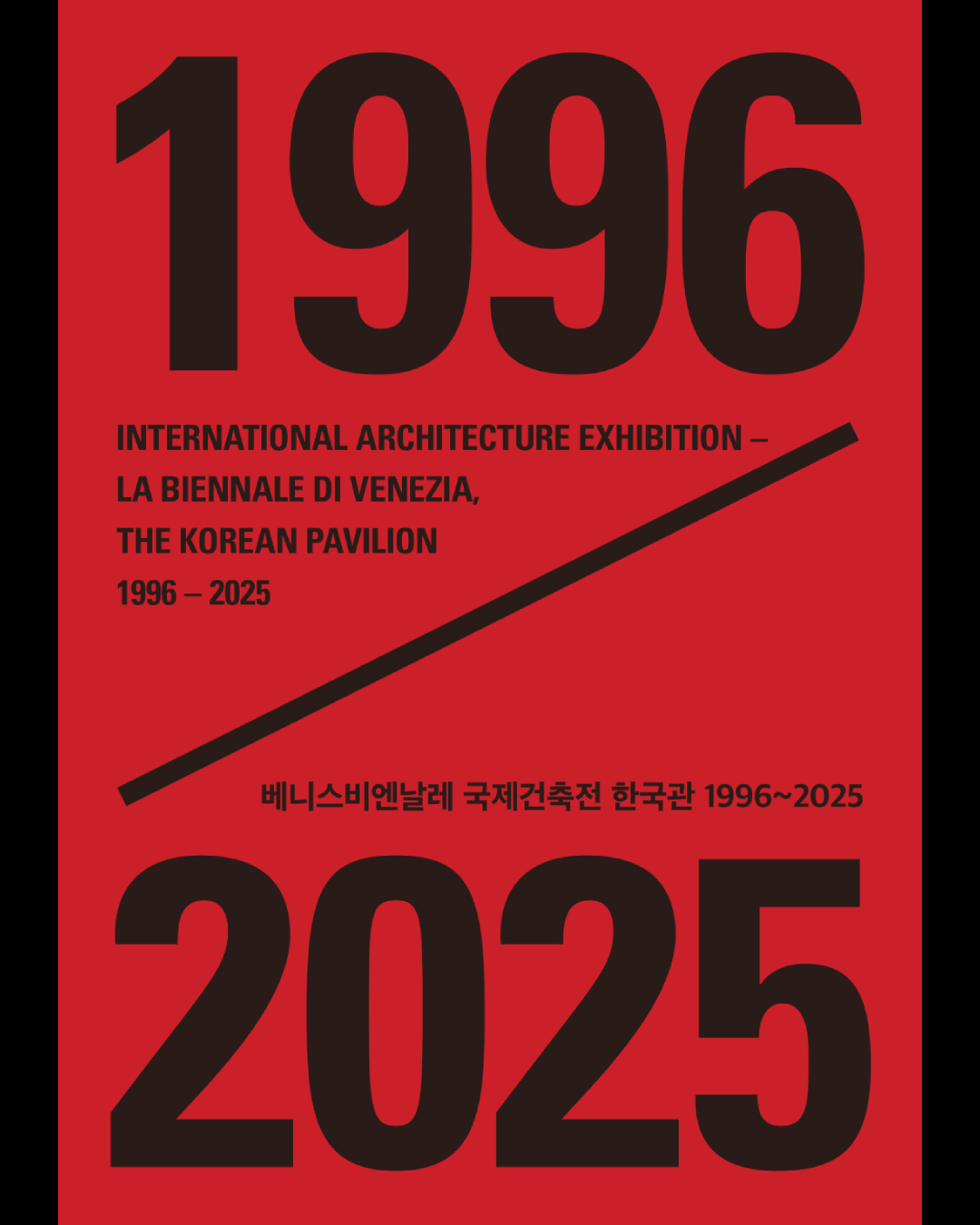Celebrating its
10th anniversary, the Seoul Biennale of Architecture and Urbanism 2025
opened on September 26 under the direction of world-renowned designer Thomas
Heatherwick.
Heatherwick’s
curatorial theme is both simple and bold: “Radically More Human.”
The phrase itself reads like a manifesto. He refers to today’s cities as
suffering from a “Blandemic”—a pandemic of blandness—criticizing how
architecture around the world has become increasingly uniform, emotionless, and
detached from human experience.
This year’s Biennale sets out to challenge that condition: to reimagine the
city as a space where emotion, warmth, and sensory experience can return.
A Cold City
Meets a Warm Wall
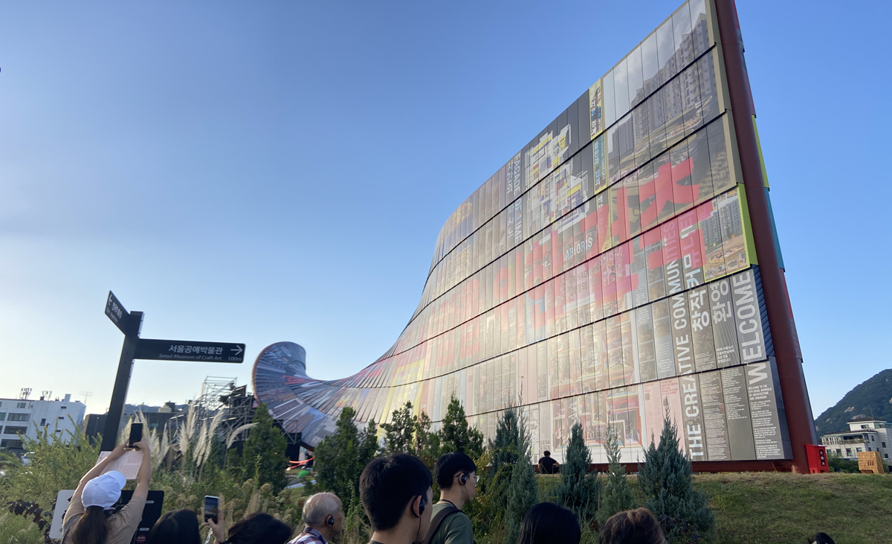
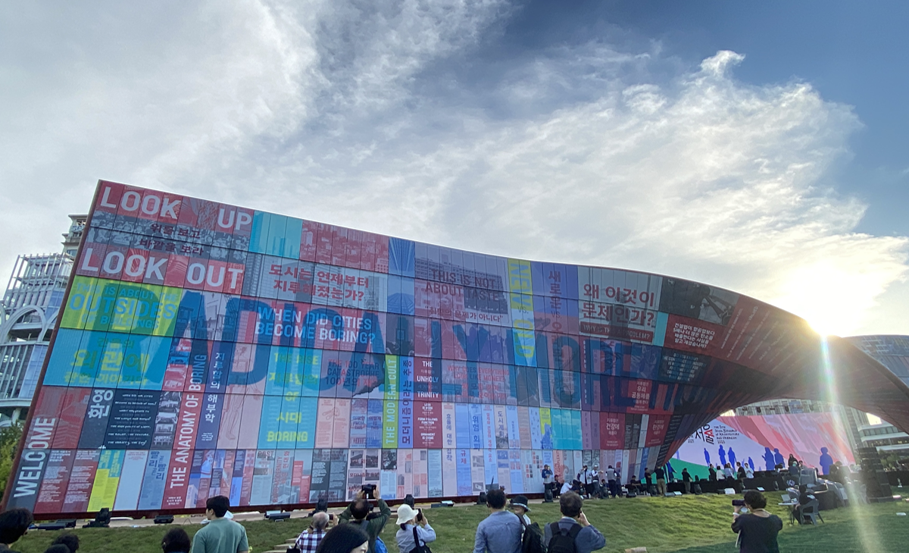
The 90-meter-long and 16-meter-high “Humanise Wall,” installed at Open Songhyeon Green Plaza, serves as the symbolic centerpiece of the Biennale. © Kim Kyung-sun / Seoul Metropolitan Government
The Biennale’s
signature installation, the “Humanise Wall,” stretches nearly 90 meters
in length and comprises over 1,400 steel tiles. It weaves together more than
400 architectural images from 38 countries along with emotional records
contributed by community groups.
This monumental structure is not just a wall—it’s a mosaic of emotions and
memories, integrating fragments of different cities and cultures into a
single architectural tapestry.
The design takes
inspiration from the traditional Korean jogakbo (patchwork wrapping
cloth). Just as imperfect fragments of fabric come together to create beauty,
the wall suggests that cities, too, are completed through the shared emotions
and memories of people.
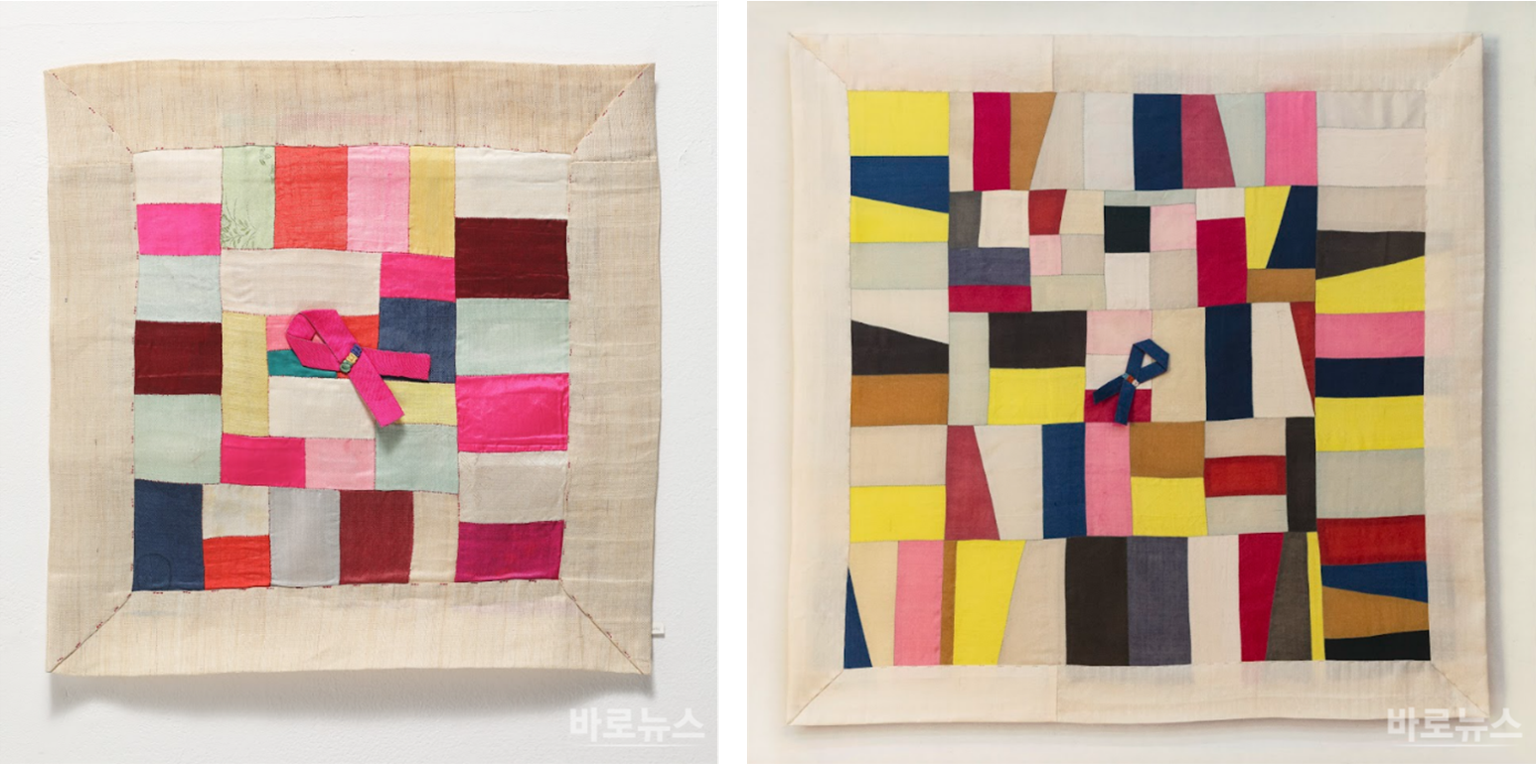
“Jogakbo”, 35 x 34 cm, 19c, Collection of TONG-IN ⓒ TONG-In Gallery
When Everyone
Becomes an Architect
One of the most
compelling aspects of the 2025 Biennale is its approach to participation.
The project ‘Walls
of Public Life’ invites creators from diverse disciplines—chefs, fashion
designers, car designers, and artisans—to reinterpret architectural façades.
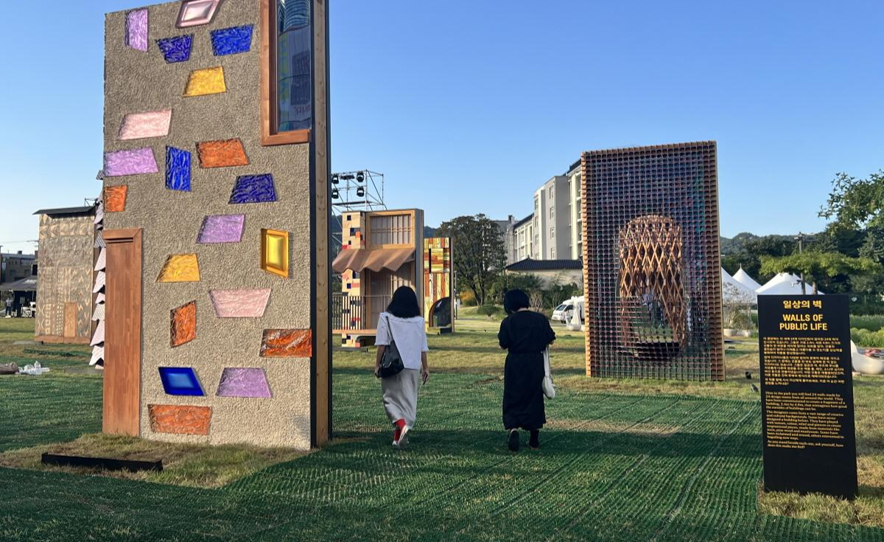
“Walls of Public Life” is a space where the imaginations of 24 teams from diverse professions have been brought to life. © Park Ji-young
The 24 wall
structures presented in this exhibition demonstrate various methods of creating
essential “visual complexity” in façade design.
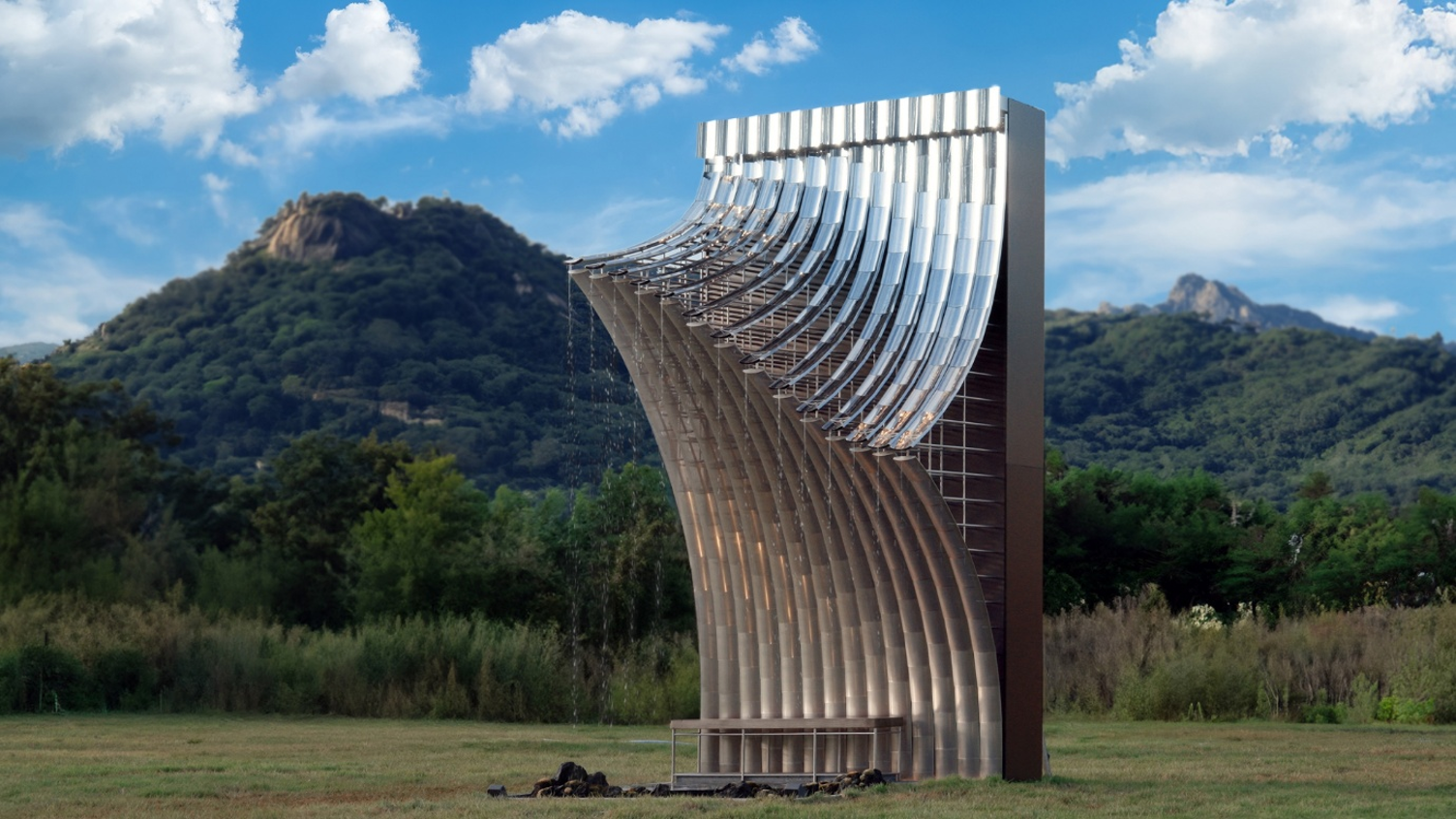
Hyundai Motor Group’s installation, "Suyounjae (水然齋, The Healing Wall)," is one of the 24 outdoor exhibits, designed as a façade sculpture embodying a human-centered healing space within the city. Inspired by traditional Korean architecture, "Suyounjae" differs from typical façade installations in that visitors can enter and directly experience the space from within. / Photo: Hyundai Motor Group
These structures
use materials, textures, and patterns as emotional languages rather than merely
functional components. Together, they show how decorative and tactile elements
can make architecture more emotionally resonant and deeply human.
“Architecture
should not be an expert’s language,” says Heatherwick, “but one that everyone
can feel.” This simple yet powerful shift defines the Biennale’s core message.
In addition, an Open
Call Project drew 83 proposals from citizen groups, with 10 community
teams selected to realize their ideas across Seoul’s everyday spaces.
These works
embody the rise of “architecture of empathy”—a participatory approach
that redefines architecture as something created with people, not
imposed upon them.
Has the City
Lost Its Emotions?
In preparation
for the Biennale, the Seoul Metropolitan Government conducted a survey of 2,000
citizens.
A striking 97%
said they were “dissatisfied with current housing design,” while over 90%
believed that architecture directly affects their mood.
These results
affirm that cities are not just physical structures but emotional
environments.
Heatherwick
remarks, “When architecture becomes insensitive to human emotions, the city
itself falls ill.”
Seen this way,
the Biennale becomes more than an exhibition—it is a cultural prescription
for the emotional recovery of cities.
From Seoul to
the World: Designing the Emotional Future of Architecture
Since its
inception in 2017, the Seoul Biennale has evolved through a series of themes:
2017: Imminent Commons
2019: Collective City
2021: Crossroads: Building the Resilient City
2023: Land Architecture, Land Urbanism
In 2025, “Radically
More Human” feels like the culmination of that journey.
Its underlying
premise—“Cities are completed not by technology but by emotion”—is
both timely and transformative. The ‘Emotional City Conference’, held
during the opening week, gathers architects, urbanists, artists, and citizens
from around the world to discuss how to design cities that feel, heal, and
connect. It marks Seoul’s evolution from a city of physical growth to one of
emotional intelligence.
The City Is
Ultimately the Face of Its People
The Seoul
Biennale of Architecture and Urbanism 2025 attempts to return the city to
its human face—to replace cold concrete and glass with structures imbued
with emotion. It explores how architecture influences the human psyche and how
cities can once again embrace those who live within them.
As Heatherwick
puts it: “Architecture is like skin. It must be warm for people to breathe.”
Seoul, at this
very moment, is dreaming once again of a city that is radically more human.
Seoul Biennale
of Architecture and Urbanism 2025 — Main Venues
1. Open
Songhyeon Green Plaza
- Main exhibition
site featuring the large-scale installation《Humanise
Wall》
- Located east of
Gyeongbokgung Palace, central Seoul
- Address: 48-9
Songhyeon-dong, Jongno-gu, Seoul
2. Seoul Hall
of Urbanism & Architecture
- Venue for
academic programs, conferences, and related exhibitions
- Address: 5
Deoksugung-gil, Jung-gu, Seoul
3. Citywide
Satellite Venues
- Public spaces,
alleys, and community areas throughout Seoul
- Embodying the
Biennale’s vision that “the city becomes the exhibition itself”
- Dates: September 26 (Fri) – November 18
(Tue), 2025
- Admission:
Free
- Opening
Hours:
> Open Songhyeon Green Plaza — 10:00–21:00
> Seoul Hall of Urbanism & Architecture — 10:00–18:00 (Closed on
Mondays)



